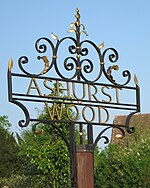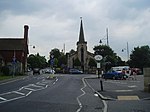Brambletye School
1919 establishments in EnglandBoarding schools in West SussexEast GrinsteadEducational institutions established in 1919People educated at Brambletye School ... and 2 more
Preparatory schools in West SussexUse British English from February 2023

Brambletye School is a coeducational day and boarding preparatory school in East Grinstead, West Sussex. It was founded as a small boys' boarding school in Kent between the world wars. The school moved to West Sussex and has since become coeducational.
Excerpt from the Wikipedia article Brambletye School (License: CC BY-SA 3.0, Authors, Images).Brambletye School
Lewes Road, Mid Sussex
Geographical coordinates (GPS) Address Phone number Website External links Nearby Places Show on map
Geographical coordinates (GPS)
| Latitude | Longitude |
|---|---|
| N 51.109711111111 ° | E 0.017680555555556 ° |
Address
Brambletye School
Lewes Road
RH19 3PD Mid Sussex
England, United Kingdom
Open on Google Maps






